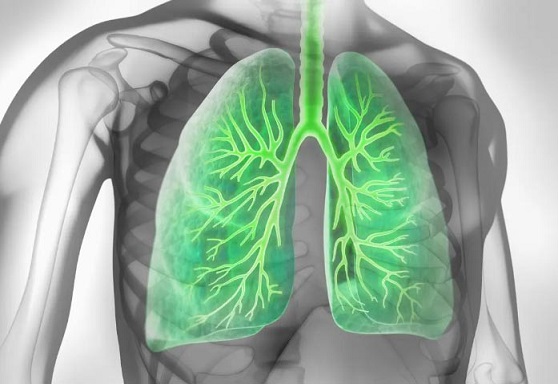WARNING - Post-COVID-19 interstitial lung disease worsens over time and there is little hope of recovery
Nikhil Prasad Fact checked by:Thailand Medical News Team Jul 30, 2024 8 months, 2 weeks, 4 days, 13 hours, 48 minutes ago
COVID-19 News: As the world continues to grapple with the aftermath of the COVID-19 pandemic, the medical community is uncovering alarming long-term health impacts. One such concern is interstitial lung disease (ILD) that emerges post-COVID-19, affecting many who had severe cases of the virus.
 WARNING - Post-COVID-19 interstitial lung disease worsens over time and there is little hope of recovery
WARNING - Post-COVID-19 interstitial lung disease worsens over time and there is little hope of recovery
Interstitial lung disease (ILD) is an umbrella term used for a large group of diseases that cause scarring (fibrosis) of the lungs. The scarring causes stiffness in the lungs which makes it difficult to breathe and get oxygen to the bloodstream.
Recent research indicates that ILD not only persists but worsens over time, offering little hope for recovery. This
COVID-19 News report examines the critical findings from a recent study conducted in Spain.
Study Overview
The study, led by a team of experts from Vall d'Hebron University Hospital and Universitat Autònoma de Barcelona, sought to understand the long-term impacts of COVID-19 on lung health. Conducted between March 2020 and February 2021, the study followed 4,332 patients hospitalized with COVID-19 pneumonia. Out of these, 1,403 patients were revisited three months post-discharge to monitor their respiratory health and lung function.
Persistent Lung Damage
Among the 1,403 patients, 66 showed significant respiratory symptoms, radiological abnormalities, and impaired pulmonary function. To further investigate, the researchers performed lung cryobiopsies on these patients, revealing several critical histological findings. This included the presence of Masson bodies, markers of cellular senescence (P16), and lymphatic proliferation (D2-40).
Cellular Senescence and Lung Function
Cellular senescence refers to a state where cells permanently stop dividing and enter a state of growth arrest without undergoing cell death. This state is often accompanied by chronic inflammation and tissue damage, contributing to diseases like ILD. The study found that higher levels of P16, a marker of cellular senescence, correlated with poorer lung function outcomes at the six-month mark. This suggests that cellular senescence plays a significant role in the progression of post-COVID-19 ILD, making it a critical area for future research and potential therapeutic interventions.
Lymphatic Proliferation and Its Effects
Another significant finding was the proliferation of lymphatic vessels in the lungs. Normally, lymphatic vessels are confined to certain lung areas, but in ILD patients, they were found spreading into the distal lung parenchyma. The study marked this proliferation using D2-40, and it was linked to decreased DLCO values, indicating impaired lung function. This abnormal spread of lymphatic vessels could be a response to the chronic damage and inflammation caused by the initial COVID-19 infection.
Masson Bodies and Organizing Pneumon
ia
Interestingly, the study found that the presence of Masson bodies, which are fibroblastic plugs that fill the airspaces, was associated with better lung function outcomes. Patients with these structures in their lung biopsies had higher FVC values at the six-month follow-up. Masson bodies are characteristic of organizing pneumonia (OP), a condition that some post-COVID-19 patients develop. OP has shown to respond well to corticosteroid treatment, which might explain the relatively better outcomes in these patients. This finding emphasizes the need for early and accurate diagnosis of OP in post-COVID-19 ILD patients to optimize their treatment plans.
Implications for Treatment and Management
The study’s findings highlight the complexities in treating post-COVID-19 ILD. The identification of senescence markers and lymphatic proliferation could help pinpoint patients at higher risk for poor outcomes, allowing for more targeted and personalized interventions. However, the persistent and worsening nature of ILD in many patients poses a significant challenge. Current treatments, including corticosteroids, may offer relief for some, but they are not a cure. The research underscores the need for continued investigation into novel therapies that can address the underlying mechanisms of ILD.
The Broader Impact
The broader implications of this study extend beyond the individual patient level. As healthcare systems worldwide continue to manage the long-term impacts of COVID-19, understanding and addressing conditions like ILD becomes crucial. The findings call for increased awareness among healthcare providers and patients about the potential for worsening lung conditions post-COVID-19. This awareness can lead to earlier interventions, better management strategies, and hopefully, improved patient outcomes over time.
Conclusion
In conclusion, the study by researchers from Vall d'Hebron University Hospital and Universitat Autònoma de Barcelona sheds light on the severe and worsening nature of post-COVID-19 interstitial lung disease. The presence of cellular senescence and lymphatic proliferation markers in lung tissue correlates with poorer lung function outcomes, highlighting the urgent need for targeted research and treatments. The discovery that Masson bodies are linked to better outcomes provides a glimmer of hope, suggesting that early diagnosis and appropriate treatment can make a difference.
The study findings were published on a preprint server and are currently being in the peer-reviewed.
https://www.researchsquare.com/article/rs-4654047/v1
For the latest
COVID-19 News, keep on logging to Thailand Medical News.
Read Also:
https://www.thailandmedical.news/news/great-news-most-post-covid-individuals-will-develop-lung-issues-similar-to-idiopathic-pulmonary-fibrosis-ipf-with-potential-serious-outcomes
https://www.thailandmedical.news/news/irrespective-of-severity-40-percent-of-post-covid-pneumonia-patients-still-have-impaired-lung-diffusion-and-22-percent-developed-lung-fibrosis-a-year-
https://www.thailandmedical.news/news/long-covid-news-stanford-study-shows-that-innate-immune-cell-activation-causes-lung-fibrosis-that-can-lead-to-long-covid-breathing-problems
https://www.thailandmedical.news/news/breaking-silent-tsunami-of-post-covid-lung-fibrosis-occurring-among-many-indian-researchers-warn-that-even-asymptomatics-are-at-risk
https://www.thailandmedical.news/news/covid-19-news-brazilian-study-shows-that-sars-cov-2-infections-induce-more-pronounced-lung-extracellular-matrix-deposition-than-other-causes-of-ards
https://www.thailandmedical.news/news/44-4-percent-of-indians-exposed-to-sars-cov-2-suffer-from-post-covid-lung-damage
https://www.thailandmedical.news/news/breaking-doctor-from-uc-san-diego-warns-of-new-covid-19-manifestations-such-as-dermatomyositis-muscular-pains-and-alerts-about-lung-fibrosis
https://www.thailandmedical.news/news/long-term-lung-healing-even-after-mild-or-moderate-covid-19-many-could-develop-lung-fibrosis
https://www.thailandmedical.news/news/individuals-who-had-covid-19-without-pneumonia-at-higher-risk-for-pulmonary-fibrosis-than-those-with-pneumonia
https://www.thailandmedical.news/news/breaking-covid-19-news-44-9-percent-of-post-covid-individuals-develop-lung-fibrosis-irrespective-of-asymptomatic-or-mild-infections-jn-1-is-worse
